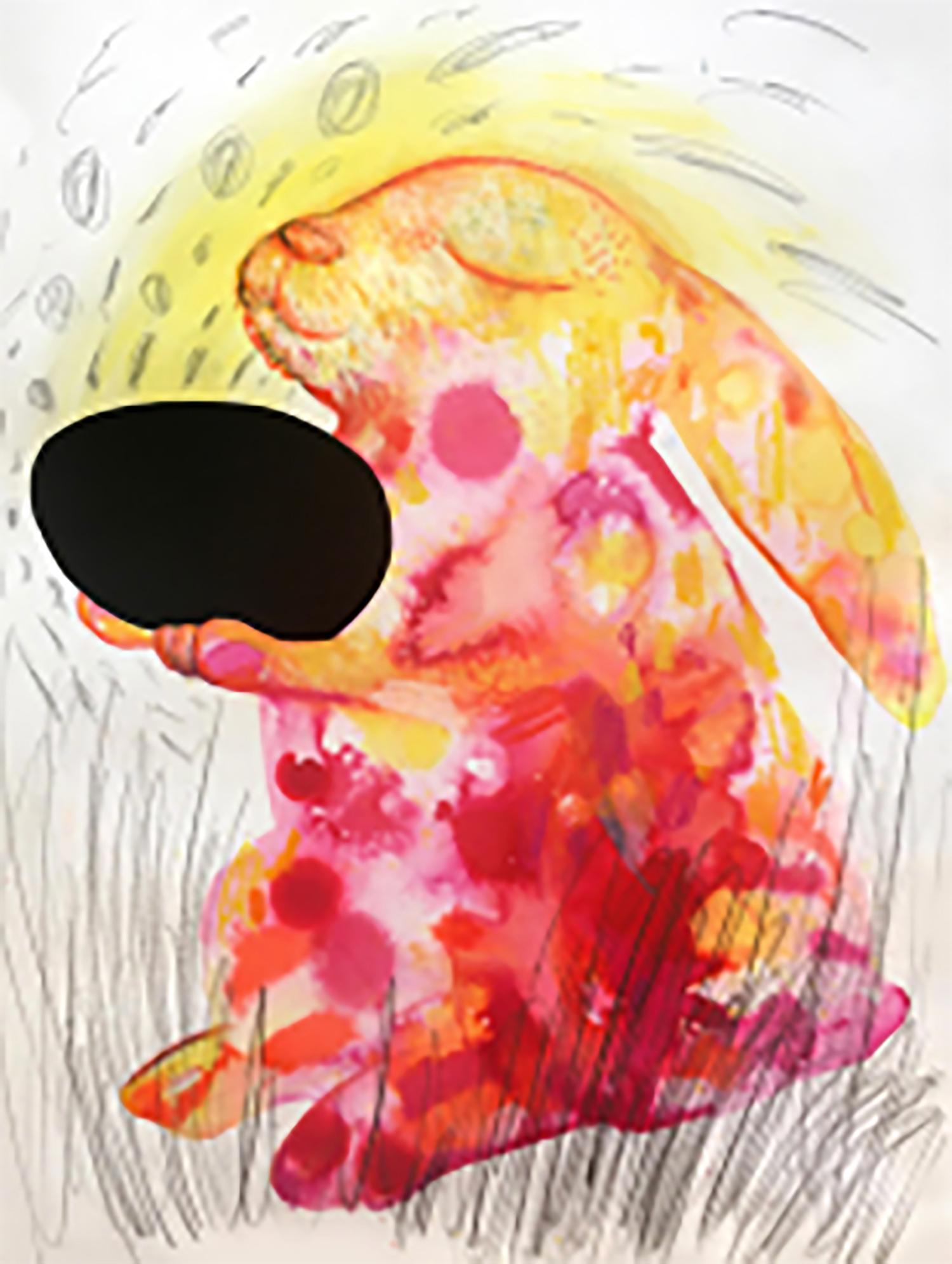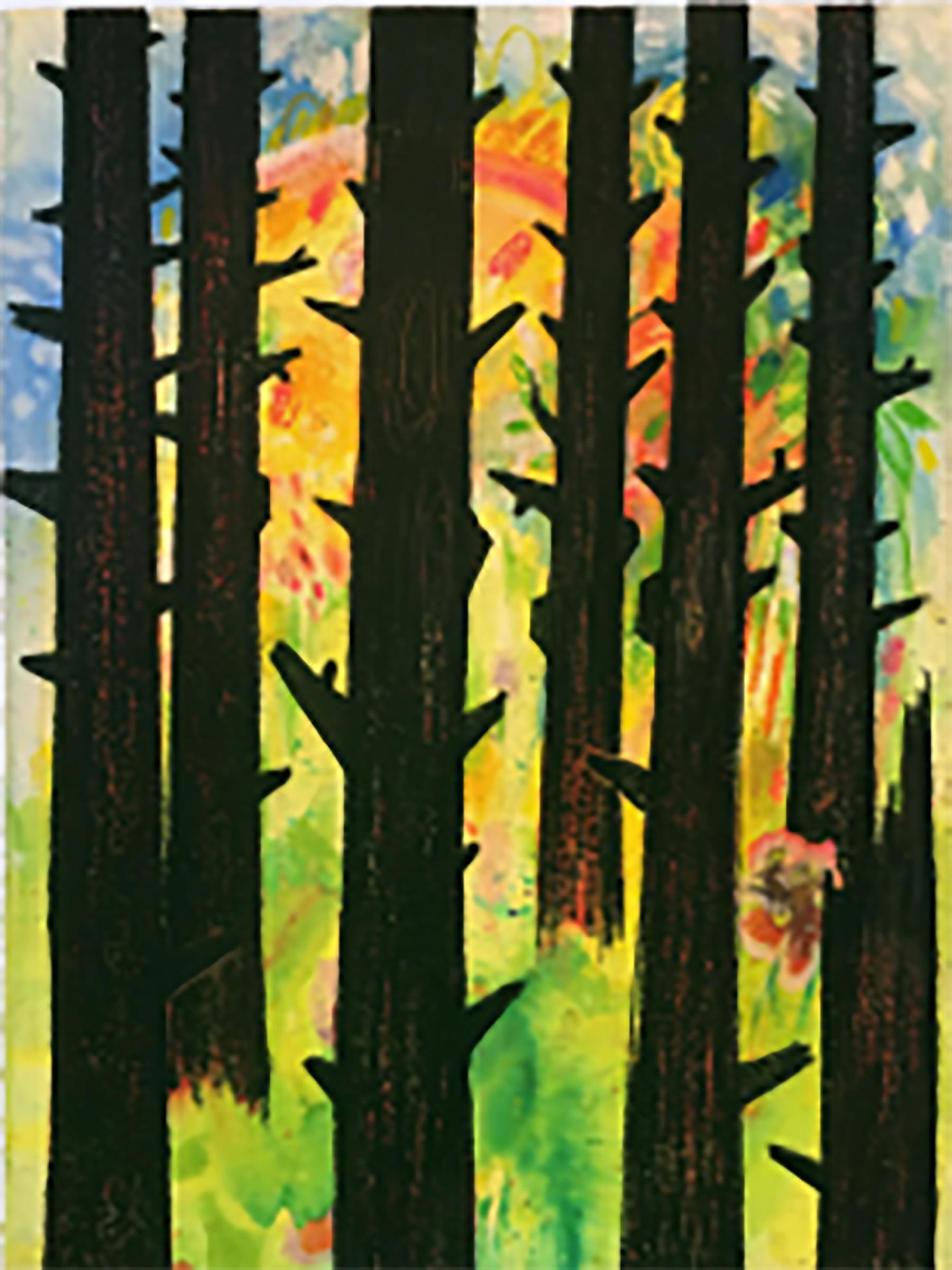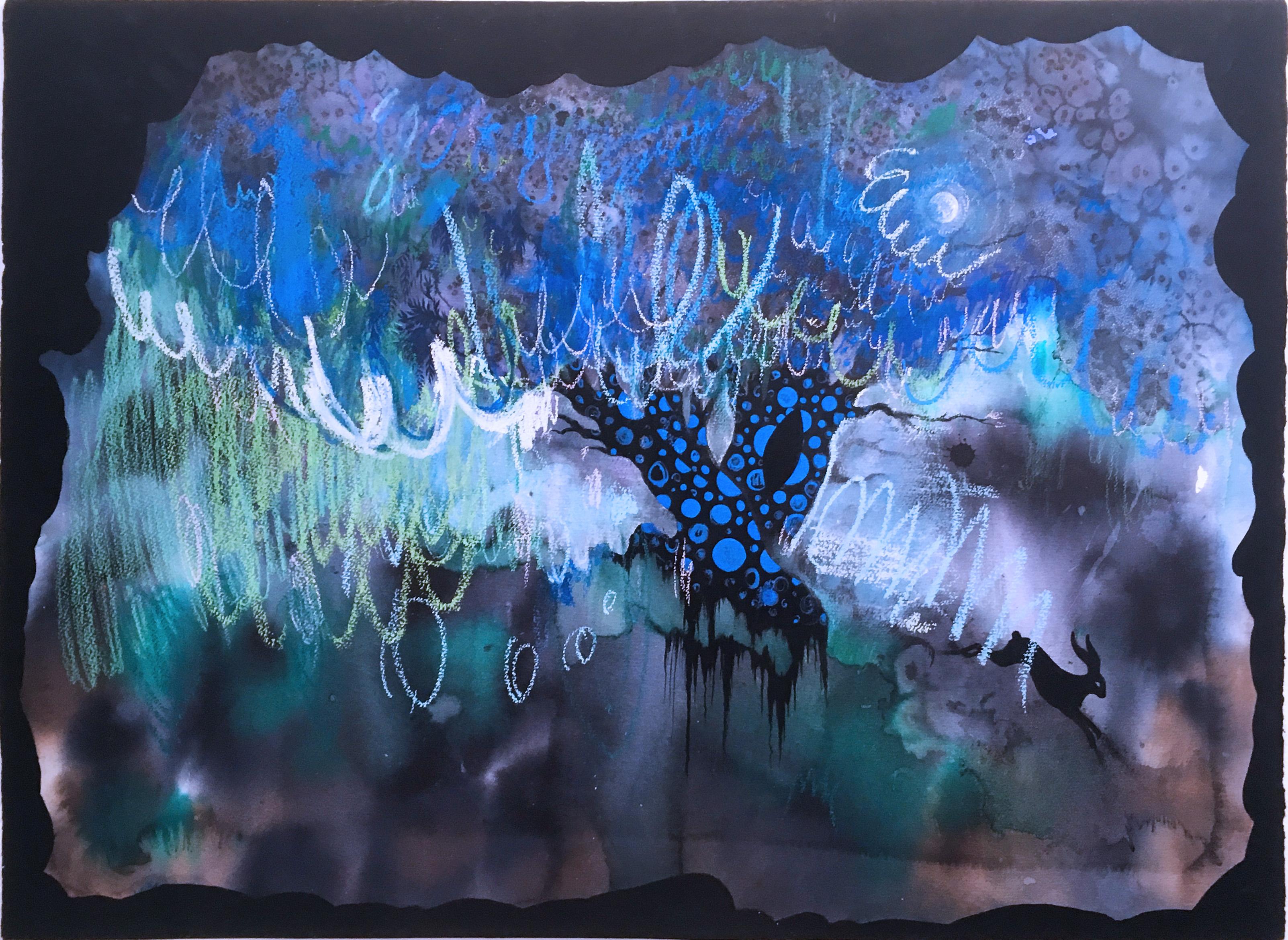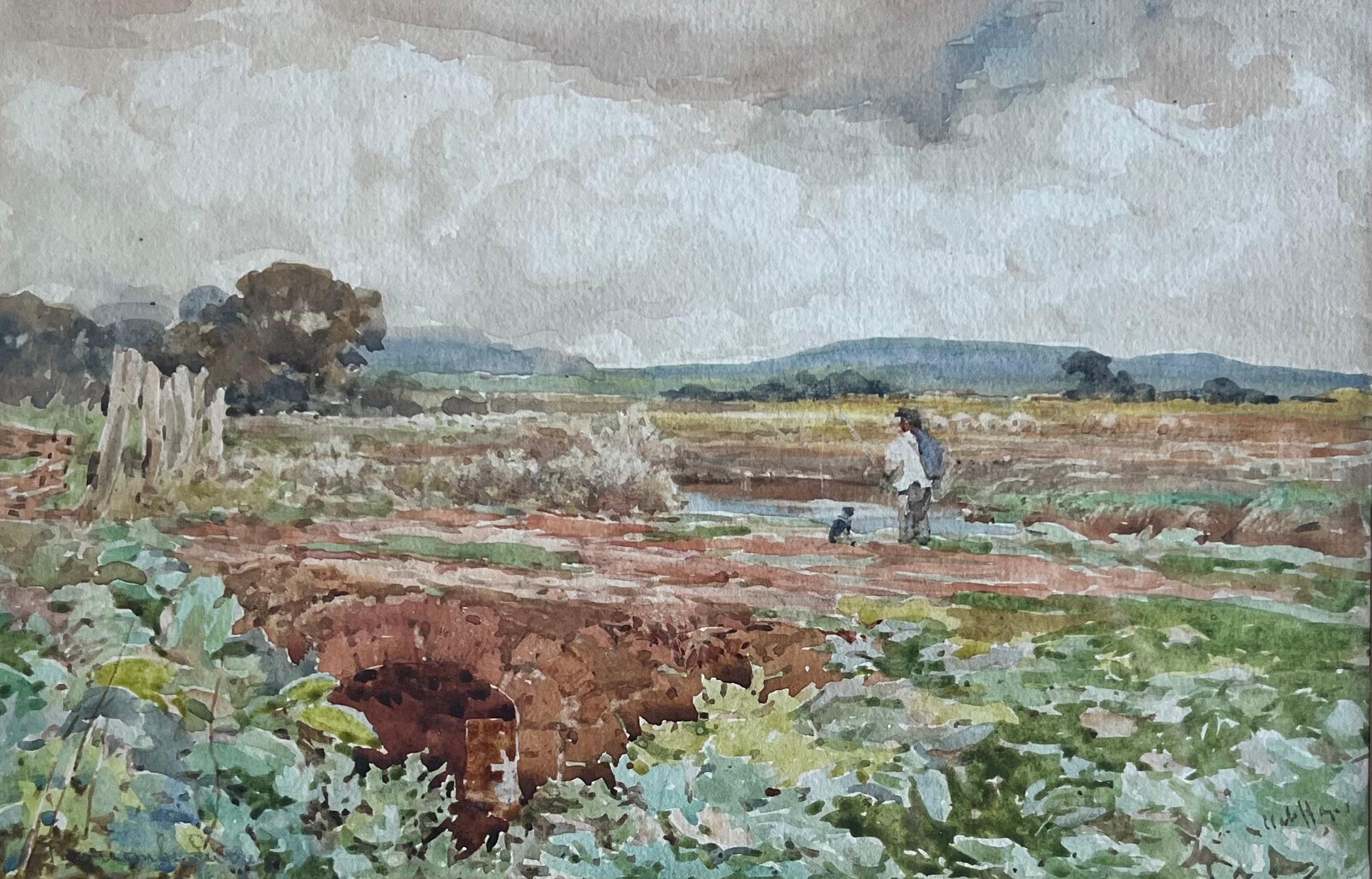Items Similar to Study for « Paysage de Fribourg » - 1943 a drawing by Balthus (1908 - 2001)
Want more images or videos?
Request additional images or videos from the seller
1 of 8
Balthus (Balthasar Klossowski de Rola) Study for « Paysage de Fribourg » - 1943 a drawing by Balthus (1908 - 2001)
About the Item
Provenance: Frédérique Tison, Château de Chassy (Burgundy-Franche Comté - France)
Bibliography: J. Clair, V. Monnier Balthus, catalogue raisonné of the complete works, Gallimard, Paris 1999 - number D513 reproduced in black and white (page 231)
Related works :
• Another preparatory study (pencil on paper - 33x45.1 cm) is listed in the catalogue raisonné as D512
• A sketch in a sketchbook (catalogue raisonné reference CC1469/9)
• Paysage de Fribourg, an oil on canvas executed in 1944, dimensions 72 x 99 cm, referenced in the catalogue raisonné under number P146 (sold at Sotheby's on 4 December 1984 - number 71)
Balthus lived in Switzerland during the war and this preparatory study is a souvenir executed during the last days of his stay in Fribourg. Evoking the landscapes of the Italian primitives, he presents us with an immense, shadowless landscape, captured by the immobility of winter. The various preparatory studies allow us to better understand the artist's creative process.
1. Balthus, a unique artist in the art of the 20th century
Balthus occupies a special place in 20th century art, which is often marked by the legacy of Marcel Duchamp or turned towards abstraction. Balthus, on the contrary, presents figurative work, based on rigorous drawing and characterized by his ability to master form through meticulous construction. The work attracts and the artist disconcerts; there is somewhat of a "Balthus mystery", largely maintained and staged by the artist himself. During his lifetime, his work was the subject of numerous exhibitions organised in the world's greatest museums (at the Musée des Arts Décoratifs in Paris in 1966, at the Tate Gallery in London in 1968, at the Centre Pompidou in Paris and at the Metropolitan Museum of Art in New York in 1983-1984, and at the Palazzo Grassi in Venice in 2001, to name but a few).
Balthus was born on 29 February 1908 into a cosmopolitan family; his father was of Prussian and Polish origin and his mother, Elsa Dorothea Spiro, nicknamed Baladine, was of Ashkenazi and Russian descent. At the beginning of the war, his family took refuge in Switzerland, where he stayed with his mother while his parents separated. In 1919, his mother met the poet Rainer Maria Rilke (1875 - 1926) who became her lover; Balthus (the nickname of the painter from which he chose his artist's name) was brought up in the artistic milieu of his mother's friends.
Balthus moved to Paris with his mother in 1924. He enrolled at the Grande Chaumière academy and frequented Pierre Bonnard's studio. In 1926, he travelled to Italy where he discovered the frescoes of Piero della Francesca and Masaccio, which had a lasting influence on his art. Influenced by the surrealists, he held his first solo exhibition in 1934. Alongside his paintings, which were increasingly successful, he created several theatre, ballet and opera sets, an activity he continued after the war. In 1938, he held his first exhibition in New York.
He married Antoinette de Watteville (1912-1997) in 1937 and the couple settled during the war first in Champrovent in Savoie, then in Fribourg in Switzerland where two of their sons were born and finally in Cologny near Geneva from 1942 onwards. In 1945 the couple separated and Balthus returned to Paris.
In 1953, Balthus, then aged 45, decided to move to the Château de Chassy in the Morvan region. He was soon joined there by his niece by marriage (the daughter of his brother Pierre Klossowski's wife from her first marriage), Frédérique Tison, who became his muse and mistress. At Chassy, facing the landscapes of the Morvan, in the immense space of the house, Balthus worked and created a huge number of works. His painting evolved to become closer to the fresco, in the manner of the Italian Renaissance masters.
Frédérique Tison accompanied Balthus to Rome when he was appointed Director of the Villa Medici by André Malraux in 1961. When they finally broke up in 1966, Balthus gave her Chassy where she settled. In 1962, during a trip to Japan, Balthus met Setsuko Ideta. She became his wife in 1967. In 1977, at the end of their time in Rome, they settled in a large chalet in Rossinière (Switzerland) where the painter lived until his death on 18 February 2001.
2. Description of the artwork
This landscape allows us to discover vast horizons with meandering views of the Sarine, the river that crosses Fribourg. The site is easily identifiable on a map of Fribourg and was probably drawn from the terrace of the Cordeliers convent, overlooking the other bank. The geometrically shaped hills rise towards the horizon; the landscape is structured by the many paths that cross it. A human presence is represented by a tiny, enigmatic silhouette on the edge of the river. The introduction of this figure allows us to measure the distance that separates us from the other bank and the immensity of this panorama. Like the landscapes depicted in the backgrounds of the Italian primitives, no shadows are represented, which gives this winter landscape a hypnotic strangeness.
The rather vaporous nature of the drawing, in which the landscape appears to be shrouded in a winter mist, contrasts with the precision with which the group of buildings and the few trees surrounding them in the foreground on the left are described. This meticulous description, together with the rather Germanic character of the building, evokes the precision of Dürer's landscapes.
3. Related works and creative process
A sketch kept in a sketchbook and another preparatory drawing give us a better understanding of the artist's creative process leading to the final painting.
It seems likely to us that the study in the sketchbook was the first idea for the painting and that Balthus subsequently studied the right-hand side (the drawing we are presenting) and the left-hand side of the painting in two separate studies that partly overlap (the house at the foot of the hill in our drawing being the one we find at the extreme right of the other study).
While in the final painting Balthus accurately reproduces the group of buildings on the right of our drawing, the group on the left of the other study is vastly simplified, while the river in the foreground is given a much more prominent place.
We have chosen to frame this preparatory drawing in a 17th century Spanish frame with faded gilding which further enhances the timelessness of this winter landscape.
Main bibliographic reference :
J. Clair, V. Monnier Balthus, catalogue raisonné of the complete works, Gallimard, Paris 1999
- Creator:Balthus (Balthasar Klossowski de Rola) (1908 - 2001, French)
- Dimensions:Height: 14.75 in (37.47 cm)Width: 19.69 in (50.02 cm)
- Medium:
- Movement & Style:
- Period:
- Condition:Size : 14 3/4" x 19 11/16" (37.5 x 50 cm) Framed 27’’x 31 ¾” (68.7 x 80.7 cm).
- Gallery Location:PARIS, FR
- Reference Number:1stDibs: LU156829447272
About the Seller
5.0
Vetted Seller
These experienced sellers undergo a comprehensive evaluation by our team of in-house experts.
Established in 2020
1stDibs seller since 2021
8 sales on 1stDibs
Typical response time: 2 hours
- ShippingRetrieving quote...Ships From: PARIS, France
- Return PolicyA return for this item may be initiated within 3 days of delivery.
More From This SellerView All
- View of Ariccia, a preparatory drawing by Achille Bénouville (1815 - 1891)Located in PARIS, FRThis very modern drawing presents a view of Ariccia, a small town 25 kilometres south-east of Rome. The Palazzo Chigi (in which the film-maker Luchino Visconti would film a large part of The Leopard a century later) and the adjoining church are seen from the bottom of the ravine that surrounds the town. This drawing is a moving testimony to the attraction of the city for artists of the Romantic period, who established in Ariccia a vivid artists' colony. 1. Achille Bénouville...Category
1850s Romantic Landscape Drawings and Watercolors
MaterialsInk, Gouache, Pencil
- Italian Landscape, a drawing by Louis-Jean Desprez (1743 - 1804)Located in PARIS, FRThis landscape, masterfully executed in pen and wash by Louis-Jean Desprez around 1779, probably represents a view of the Roman countryside. The treatment of the trees is very similar to that of two engravings which Desprez executed in Rome, The Island of Cythera and The Temple of Love. 1. Louis-Jean Desprez, a cosmopolitan life between Italy and Sweden Born in Auxerre in 1743, Louis-Jean Desprez probably began his apprenticeship with the engraver Charles-Nicolas Cochin...Category
1770s Old Masters Landscape Drawings and Watercolors
MaterialsCarbon Pencil, Ink
- A landscape drawing by Claude Lorrain, with a preliminary sketch on the versoBy Claude LorrainLocated in PARIS, FRThis study presents a typical Roman countryside landscape: an ancient mausoleum in front of which a cart is passing by followed by two peasants. If the technique (a pen drawing on graphite lines, completed with a wash of brown and grey inks) and the signature inevitably evoke the art of Lorrain, we find on the verso of this drawing additional evidences that lead us to consider this unpublished drawing as a work by the master. The motif of the mausoleum has been taken up in pen on the verso in a technique that can be found in several other drawings by Lorrain. There is also a study of three characters, which can be considered as preparatory to Lorrain’s painting entitled The Port of Ostia with the Embarkation of Saint Paula, leading us to claim this attribution with a dating of around 1629. 1. Claude Lorrain or the perfection of classical landscape in Rome in the 17th century Claude Gellée was born in 1600 in Chamagne in Lorraine. Orphaned at the age of twelve, he spent a year with his brother in Freiburg, where the latter was a woodcarver. Claude Gellée then probably arrived in Rome in 1613, where he joined the workshop of Agostino Tassi (1580 - 1644) in 1617. Between 1619 and 1620 he studied for two years in Naples in the workshop of Goffredi Wals (who was himself a former pupil of Tassi). In 1625 he returned to Lorraine for two years where he worked alongside Claude Deruet. He then returned to Rome, a city he never left for the rest of his life (except for short trips to the surrounding countryside). From 1627 to 1650 he lived in Via Margutta. From 1635 onwards he became a renowned painter and commissions started to pour in. Considered during his lifetime as the most accomplished of the classical landscape painters, his reputation never faded. Between 1629 and 1635 Le Lorrain often went to the Roman countryside to draw with his friend Joachim von Sandrart (1606 - 1686). He became a member of the Academy of Saint Luke in 1633, while being closely acquainted with the Bentvueghels, this guild which brought together the young Nordic painters active in Rome. In 1643 he joined the Congregation of the Virtuosi. In 1650 he moved to Via Paolina where he lived until his death. Little is known of his intimate life. He seems to have had a daughter, Agnes, from an ancillary love affair. In 1657/ 1658 she moved in with him. Stricken with gout in 1663, he died in 1682. 2. Description of the drawing; the technique of nature studies Two peasants are walking behind a horse-drawn cart on a road that winds through ancient tombs. While a rectangular tomb with a columned facade can be seen in the distance, the cart passes an important ancient building. It has a circular shape and its partially ruined façade is decorated with columns. The start of a second floor can...Category
1660s Old Masters Landscape Drawings and Watercolors
MaterialsInk, Pen, Graphite
- View of the Ovo Castle in the Moonlight, a 19th century Neapolitan gouacheLocated in PARIS, FRNeapolitan gouaches appeared in the eighteenth century when tourism in the Naples area was developing: the discoveries of Herculaneum and Pompeii made this city a mandatory stop on the Grand Tour, the journey made by wealthy Europeans to complete their education. Generally small in size for ease of transport and affordable in price, these gouaches were the ideal travel souvenir that these tourists of the early days were bringing back to capture the idyllic landscapes they had discovered during their journey and to share them with family and friends upon their return at home. The Bay of Naples and the eruptions of Vesuvius are the favourite themes of these views. Here we have a view of the Ovo Castle, which was rebuilt on the island of Partenope, in the middle of the Bay of Naples and about a hundred metres from the shore by the Normans in the 12th century on antique ruins...Category
Early 19th Century Romantic Landscape Drawings and Watercolors
MaterialsGouache, Paper
- Landscape with Trees and a Fisherman walking, a drawing by Jan Van GoyenBy Jan Josefsz Van GoyenLocated in PARIS, FRNo Dutch draughtsman ever captured the atmosphere of the rural countryside of Holland with the same atmospheric and engaging simplicity that Van Goyen achieved in drawings such as this. Indeed, his landscapes were seminal in the development of the genre. The present sketch conveys a striking sense of movement within the natural landscape, conveyed by the deftly applied strokes of chalk, from which the artist’s hand can be sensed. The composition is characteristic of his work, with the low horizon affording significance to the broad sky and the soaring birds within. This feeling of windswept motion powerfully evokes the expansive Dutch farmland with which he was evidently preoccupied. 1. Jan van Goyen...Category
1650s Old Masters Landscape Drawings and Watercolors
MaterialsChalk, Ink, Laid Paper
- View of an Antique City, a wash landscape by Jan de Bisschop (1628 - 1671)Located in PARIS, FRThe attribution to Jan de Bisschop has been confirmed by the RKD with the following comment: "We base this attribution on the dark washes, the subject represented and the monogram". ...Category
17th Century Old Masters Landscape Drawings and Watercolors
MaterialsInk, Pen
You May Also Like
- "Tugboat at Dock, " Reginald Marsh, Modern WPA Industrial ShipBy Reginald MarshLocated in New York, NYReginald Marsh Tugboat at Dock, circa 1937 Signed lower right Watercolor and pencil on paper 13 3/4 x 20 inches Housed in a Lowy frame. Provenance: Sotheby'...Category
1930s Modern Landscape Paintings
MaterialsPaper, Watercolor, Pencil
- Gift, 2020, watercolor, oil pastel, pink, orange, rabbit, ink, fantasyBy Shamona StokesLocated in Jersey City, NJGift, 2020, watercolor, oil pastel, pink, orange, ink, fantasy, rabbit.Category
2010s Contemporary Landscape Paintings
MaterialsPaper, Oil Pastel, Ink, Watercolor, Graphite
- Anthemusa, 2020, watercolor, oil pastel, green, landscape, ink, fantasy, blueBy Shamona StokesLocated in Jersey City, NJAnthemusa, 2020, watercolor, oil pastel, green, landscape, ink, fantasy.Category
2010s Contemporary Landscape Paintings
MaterialsOil Pastel, Ink, Acrylic, Watercolor, Color Pencil, Graphite, Paper
- Hopeful Spring, 2020, watercolor, oil pastel, green, landscape, fantasy, treesBy Shamona StokesLocated in Jersey City, NJHopeful Spring, 2020, watercolor, oil pastel, green, landscape, fantasy, trees.Category
2010s Contemporary Landscape Paintings
MaterialsPaper, Oil Pastel, Ink, Acrylic, Watercolor, Color Pencil, Graphite
- Dark Night, 2020, watercolor, oil pastel, black, frame, landscape, fantasy, blueBy Shamona StokesLocated in Jersey City, NJWatercolor on paper, framed. Dark Night, 2020, watercolor, oil pastel, black, frame, landscape, fantasy, blue, creature. Framed and matted, frame size measures 24" x 35.75" x 1.25" ...Category
2010s Contemporary Landscape Paintings
MaterialsGouache, Color Pencil, Paper, Oil Pastel, Ink, Watercolor
- English watercolour of a fisherman and his dogLocated in Harkstead, GBA very attractive rural scene of a fisherman and his dog on a riverbank, in very good colour and an appealing composition. Claude Hayes (1852-1922) A fisherman and his dog by a riverbank Signed Watercolour with touches of pencil 6½ x 10 inches, image only 13 x 16 inches with the frame Claude Hayes was a Dublin born painter who to avoid his father's wish to make a businessman of him ran away to sea and served on the Golden Fleece, one of the transports used in the Abyssinian expedition of 1867-68, and also spent a year in the United States. Returning to London, he studied art at Heatherley's and the Royal Academy Schools, and then in Antwerp, under Charles Verlat. He worked in Hampshire with James Aumonier and also in Surrey with William Charles Estall, whose sister he married. Hayes exhibited widely in London and provincial centres, and was elected a member of the Royal Institute of Painters in Water Colours in 1886, the Royal Institute of Oil Painters in 1883, and the Royal Scottish Society of Painters in Watercolour, 1902. He also showed at the RA, RBSA, Brook Street Art Gallery, Dudley Gallery, FAS, GI, Grosvenor Gallery, Walker Art Gallery, Liverpool, MAFA, RBA, RHA, Ridley Art Club, RSW and Walker's Gallery, London. In 1912, Claude Hayes represented England at the Venice Biennale. His work is in various public collections in England and Ireland including the Ulster Museum, Museums Sheffield, Torre Abbey Museum and the Leeds City Art Gallery. His father was the artist Edwin Hayes.Category
Late 19th Century Victorian Landscape Drawings and Watercolors
MaterialsWatercolor, Pencil, Paper
Recently Viewed
View AllMore Ways To Browse
Study Of Hand And Foot
Vintage Building Drawing
Vintage Building Drawings
Vintage Drawing Ideas
Beige Clair
Set Of 3 Drawings
Opera Drawing
Opera De Paris
Italy 1943
Vintage Couple Drawing
Vintage Framed Silhouettes
Vintage Framed Silhouette
Italian Villa Drawing
Ballet Drawing
1940 Drawing Italy
Primitive Drawing
Preparatory Drawing
Black And White Modern Large Drawings




